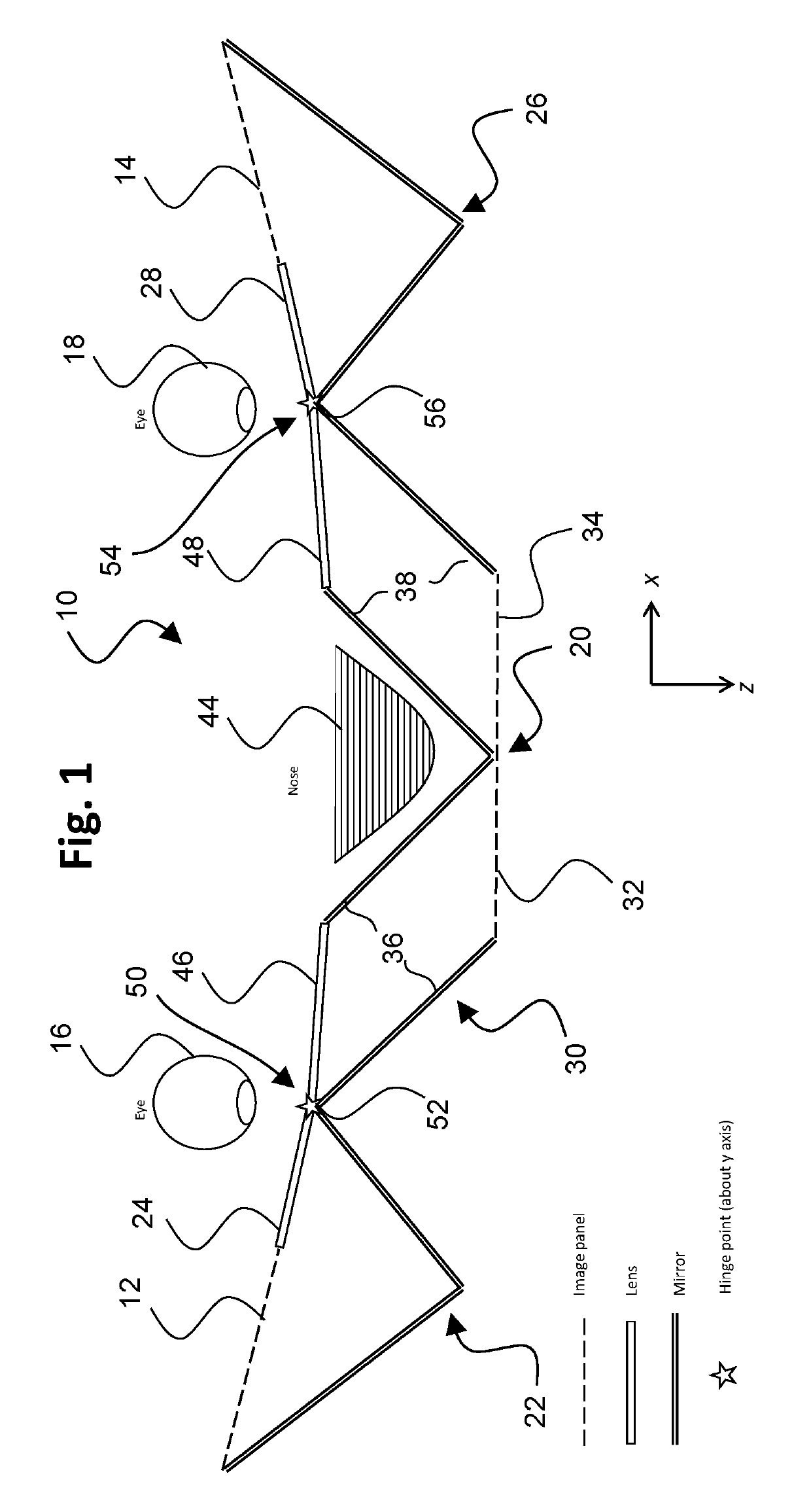Hinged lens configuration for a compact portable head-mounted display system
a display system and lens configuration technology, applied in the field of compact portable head-mounted display systems, can solve the problems of affecting the image quality of the display module, and the weight of the device is far forward, so as to achieve compact and comfortable wear, enhance the effect of hmd and enhance the image quality
- Summary
- Abstract
- Description
- Claims
- Application Information
AI Technical Summary
Benefits of technology
Problems solved by technology
Method used
Image
Examples
Embodiment Construction
[0029]Embodiments of the present invention will now be described with reference to the drawings, wherein like reference numerals are used to refer to like elements throughout. It will be understood that the figures are not necessarily to scale.
[0030]FIG. 1 is a drawing depicting a top view of an exemplary head-mounted display (HMD) system 10 in accordance with embodiments of the present invention, with the HMD system being in an unfolded state. In exemplary embodiments, the HMD system includes three image panels, which may be of equal dimensions. Referring to the figure, a first image panel 12 and a second image panel 14 are respectively used to present an image in an unshared fashion to each of the right eye 16 and the left eye 18 of a user. The HMD system 10 further includes a third or shared image panel 20 that is located centrally relative to the first and second image panels, and the third image panel 20 presents an image that is shared between both left and right eyes. In this...
PUM
 Login to View More
Login to View More Abstract
Description
Claims
Application Information
 Login to View More
Login to View More - R&D
- Intellectual Property
- Life Sciences
- Materials
- Tech Scout
- Unparalleled Data Quality
- Higher Quality Content
- 60% Fewer Hallucinations
Browse by: Latest US Patents, China's latest patents, Technical Efficacy Thesaurus, Application Domain, Technology Topic, Popular Technical Reports.
© 2025 PatSnap. All rights reserved.Legal|Privacy policy|Modern Slavery Act Transparency Statement|Sitemap|About US| Contact US: help@patsnap.com



